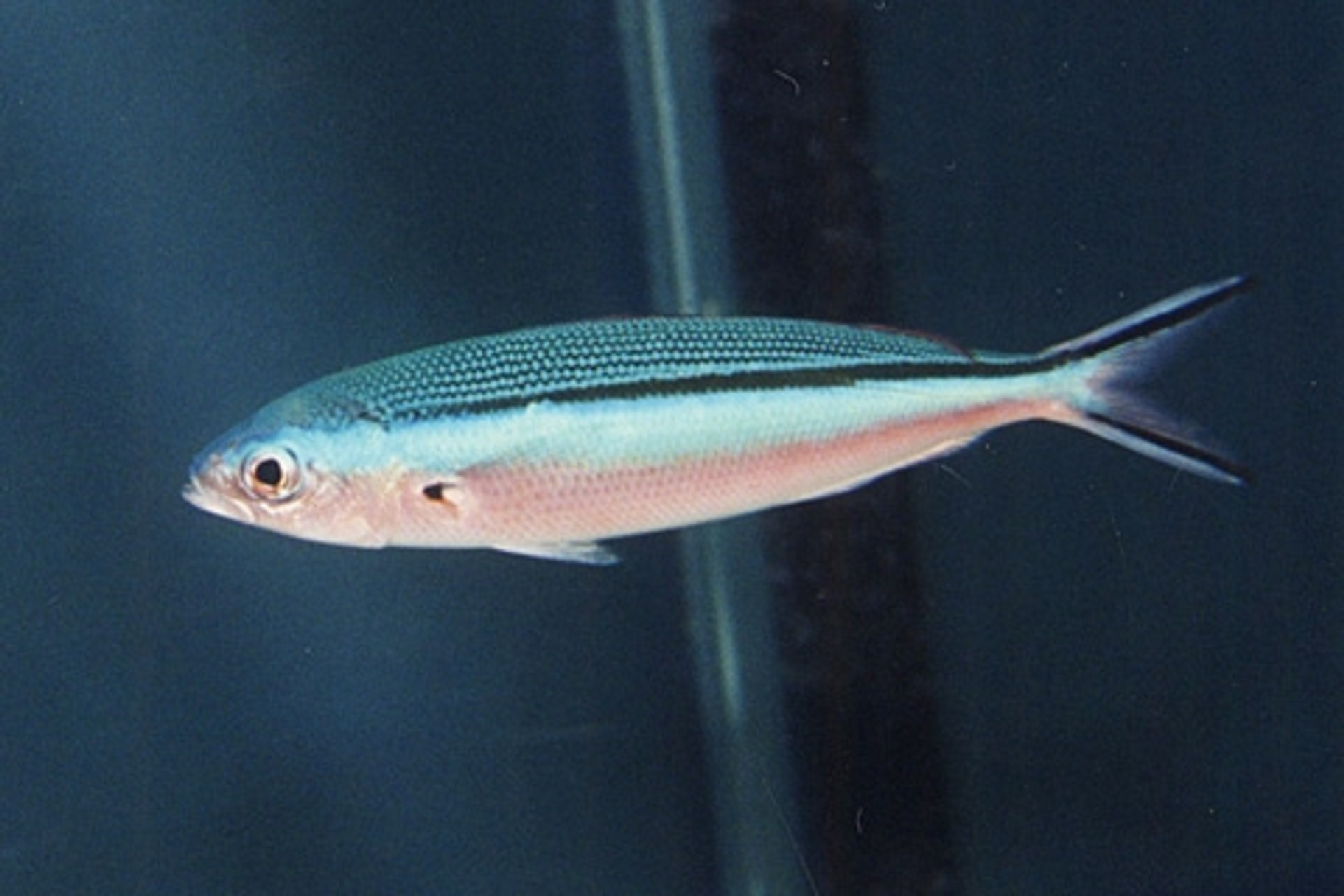The Dark Banded Fusilier

Taxonomy
Class: Actinopterygii (ray-finned fishes)
Order: Perciformes (perch-likes)
Family: Caesionidae (Fusiliers)
Genus: Pterocaesio
Species: tile
Description:
QM Currents first featured fish was Pterocaesio tile. It represents one of several species of fish sold exclusively by Quality Marine. These magnificent fish are commonly collected in Tahiti and occasionally in the deeper waters of Fiji. They are a hardy and fairly disease resistant fish that thrive once settled into their captive environments. They are a peaceful and reef-safe fish, as they will not eat or pick on corals. Being planktivores, they will readily consume any small fish that might fit in their mouth and perhaps some smaller ornamental shrimp. They are known to reach up to 16 inches in length and are found mostly in deeper waters, sometimes at depths over 60 meters. The Dark-banded fusilier is typically a blue color with dark lateral bands on the upper portions of its body. They are also excellent jumpers, care should be taken to prevent any sudden disturbances that may startle the fish as it may attempt to jump from its aquarium.
Fusiliers are a family composed of 4 different genera and 25 known species. They are a tropical fish, primarily distributed throughout the Indo-West Pacific with a few species reaching the Red Sea and South Pacific. Fusiliers are planktivores, feeding primarily on suspended zooplankton, fish eggs, and larvae. They are a schooling fish, sometimes with different fusilier species mixing together. They naturally swim and feed in mid-water aggregations just above coral reefs and on reef ledges. At night or when they are stressed certain species are known to turn a bright red to better blend in with the rock in which they hide.
In the past Fusiliers were uncommonly seen in the US aquarium market; however, with their hardiness, attractive color, mild mannered demeanor, and active swimming behavior they make ideal choices for captive aquariums. In fact, they are being displayed in many public aquariums and commercial locations, including: the Georgia Aquarium, Long Beach Aquarium of the Pacific, the Aquarium of the Americas, Riverbank Zoo, Aquarium Nashville, The Mirage, Ripleys Aquarium of the Smokies and others.
References:
Carpenter, K.E., 1988. FAO species catalogue. Vol. 8. Fusilier fishes of the world. An annotated and illustrated catalogue of caesionid species known to date.. FAO Fish. Synop. 8(125):75 p.(page 61)
Lieske, E. and R. Myers, 1994. Collins Pocket Guide. Coral reef fishes. Indo-Pacific & Caribbean including the Red Sea. Haper Collins Publishers, 400 p.(page 47.1)
Schultz, Henry C. III. The Family Caesionidae. Reefkeeping January 2005 http://www.reefkeeping.com/issues/2005-01/hcs3/index.php